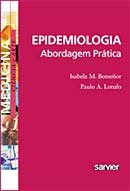 Esse blogue não é parte dos "media-watchers". Por esse motivo, não estou discutindo a decisão editorial de Veja em abrir capa sobre o tratamento cirúrgico do diabetes. Mas, sim o fato de que proposta original publicada na revista Sao Paulo Medical Journal - do qual fui editor entre 1999 a 2005 - no ano de 2006 seguida de editorial sobre o tema não foi citada na reportagem da revista. Nem mesmo, Sérgio Santoro, o autor principal. Explicando melhor: o autor submeteu artigo em 2003, enviei o manuscrito - como norma da revista - a dois revisores e, um deles expressamente não recomendou o artigo. Eu recusei o artigo. Em 2005, o autor recorreu da decisão e, enviei a outros dois revisores que consideraram o artigo merecedor de publicação . O artigo foi publicado em 2006 já em outro mandato editorial.
Esse blogue não é parte dos "media-watchers". Por esse motivo, não estou discutindo a decisão editorial de Veja em abrir capa sobre o tratamento cirúrgico do diabetes. Mas, sim o fato de que proposta original publicada na revista Sao Paulo Medical Journal - do qual fui editor entre 1999 a 2005 - no ano de 2006 seguida de editorial sobre o tema não foi citada na reportagem da revista. Nem mesmo, Sérgio Santoro, o autor principal. Explicando melhor: o autor submeteu artigo em 2003, enviei o manuscrito - como norma da revista - a dois revisores e, um deles expressamente não recomendou o artigo. Eu recusei o artigo. Em 2005, o autor recorreu da decisão e, enviei a outros dois revisores que consideraram o artigo merecedor de publicação . O artigo foi publicado em 2006 já em outro mandato editorial.O que eu gostaria de saber é: (1) se os médicos entrevistados citaram os resultados iniciais da equipe de Santoro às jornalistas e, elas por motivo que não interessa aqui - por inócuo -decidiram não entrevistá-lo; ou (2) houve omissão por parte de um dos entrevistados, o que seria estranho, porque afinal, ele foi o revisor foi um dos revisores do artigo acima citado no já longíquo 2003. Fica o registro aqui, para a posteridade. Abaixo, o resumo do artigo de Santoro.
CONTEXT AND OBJECTIVE: Most bariatric surgical techniques include essentially non-physiological features like narrowing anastomoses or bands, or digestive segment exclusion, especially the duodenum. This potentially causes symptoms or complications. The aim here was to report on the preliminary results from a new surgical technique for treating morbid obesity that takes a physiological and evolutionary approach. DESIGN AND SETTING: Case series description, in Hospital Israelita Albert Einstein and Hospital da Polícia Militar, São Paulo, and Hospital Vicentino, Ponta Grossa, Paraná. METHODS: The technique included vertical (sleeve) gastrectomy, omentectomy and enterectomy that retained three meters of small bowel (initial jejunum and most of the ileum), i.e. the lower limit for normal adults. The operations on 100 patients are described. RESULTS: The mean follow-up was nine months (range: one to 29 months). The mean reductions in body mass index were 4.3, 6.1, 8.1, 10.1 and 10.7 kg/m2, respectively at 1, 2, 4, 6 and 12 months. All patients reported early satiety. There was major improvement in comorbidities, especially diabetes. Operative complications occurred in 7% of patients, all of them resolved without sequelae. There was no mortality. CONCLUSIONS: This procedure creates a proportionally reduced gastrointestinal tract, leaving its basic functions unharmed and producing adaptation of the gastric chamber size to hypercaloric diet. It removes the sources of ghrelin, plasminogen activator inhibitor-1 (PAI-1) and resistin production and leads more nutrients to the distal bowel, with desirable metabolic consequences. Patients do not need nutritional support or drug medication. The procedure is straightforward and safe.

Nenhum comentário:
Postar um comentário